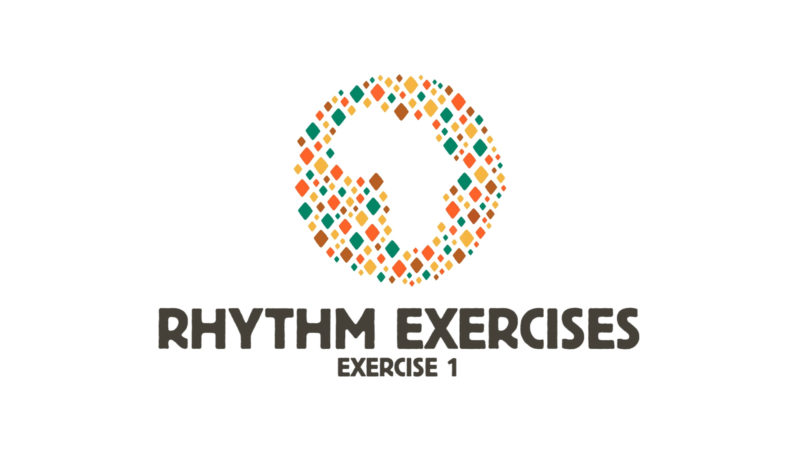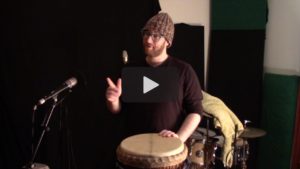Hello!
We thought it would be a good idea to develop a blog series where we take some of our most popular free videos, and distill the info into text form as best we can. Different people learn in different ways, so we hope this helps some of you!
Today, we’re going to revisit our Rhythm Power Exercise 1 video – you can find this video, along with the other Rhythm Power Exercise videos, in the Technique > Technique Exercises section of African Drumming Online:
https://africandrummingonline.com/technique/technique-exercises/
Not yet a member? You can sign up free to get access, here:
https://africandrummingonline.com/
This video is a tricky one to convert to text, so I’m going to cheat by dropping in some videos, lined up to the relevant sections.
In short, it shows the first level of a series of exercises to help you build your independence, by combining walking, clapping, and singing some traditional rhythms. If you are new to learning how to play African drums, it’s best to start with this first exercise, then work your way up!
This exercise is broken up into stages. Stage One is just walking.
Choose a slow tempo, and let your feet walk in a steady rhythm, creating a beat – 1, 2 , 3, 4. Here’s a little bit of the video lined up at the correct spot so you see what I mean:
That’s the first stage.
Stage Two is singing a very popular rhythm found throughout a lot of African music, Cuban music, rock music, funk music – if you haven’t heard it before, you will now! The rhythm can be sung lots of different ways, but the way I use in the video is “Ken-ny ken-ny ka, cha cha” – listen to what I mean below:
So that’s Stage Two, walking the beat, and singing Kenny kenny ka, cha cha (the bell). This is hard enough to do – be careful not to fall over.
Stage Three amps it up a bit more – as well as walking on the beat and singing the rhythm, Stage Three involves also clapping the rhythm. When converting the sung rhythm into claps, we only clap on the first syllable – on ‘ken’, ‘ken’, ‘ka’, and the ‘cha’ ‘cha’s, not the ‘ny’ sounds. If that doesn’t make sense, have a listen to how the rhythm is clapped here:
Of the three stages, Stage Three is definitely the hardest – what you’ll probably find is that your feet start doing strange things, and don’t keep the beat. Still, give it a go without thinking about it too much, and see how you go.
After just trying it without thinking about it, you might find that you get it, but you probably won’t! If this is the case for you, it can sometimes help to break it down.
In the rest of the video, I spent time breaking down each clap, and where it fits relative to your feet.
I’m going to try to break it down to the same basic steps in text format – the idea is that if you go through each step of movements in order, you’ll eventually get the exercise happening.
Let’s see if this makes sense…
- Clap and Right Foot together
- Clap and raise your Left Foot
- Left Foot
- Clap and raise your Right Foot
- First Foot
- Clap and raise your Left Foot
- Clap and Left Foot together
Don’t worry about time, feel, or how it sounds, just try doing the steps one by one – clap and right foot, lift left foot and clap, left foot down, etc. It might feel more like a balance test than a drumming exercise at first, but I reckon it will help you get it.
My suggestion is that by breaking it down into individual actions in a sequence – learned without thinking about the whole – you’ll teach your body how to do the movements, then you can make them smoother, and speed them up. Eventually, you’ll have taught your body the movement sequence such that you don’t need to think about it as much, then you can listen to what you’re doing and discover you’re doing two things at once! Then, you can add the singing.
I think this is the ‘trick’ to independence – when you’re starting, the way to develop independence is to break the ‘two’ parts into a series of movements that you treat as one thing. After you’ve learned the ‘one’ thing – which is really just two things smooshed together and slowed down – you can get comfortable enough with it to hear it as two things. After doing this more and more, the ability to get to ‘true’ independence – where you’re actually playing and thinking of multiple things at once – becomes easier.
Hope that helped! Please let us know if you have any questions.




